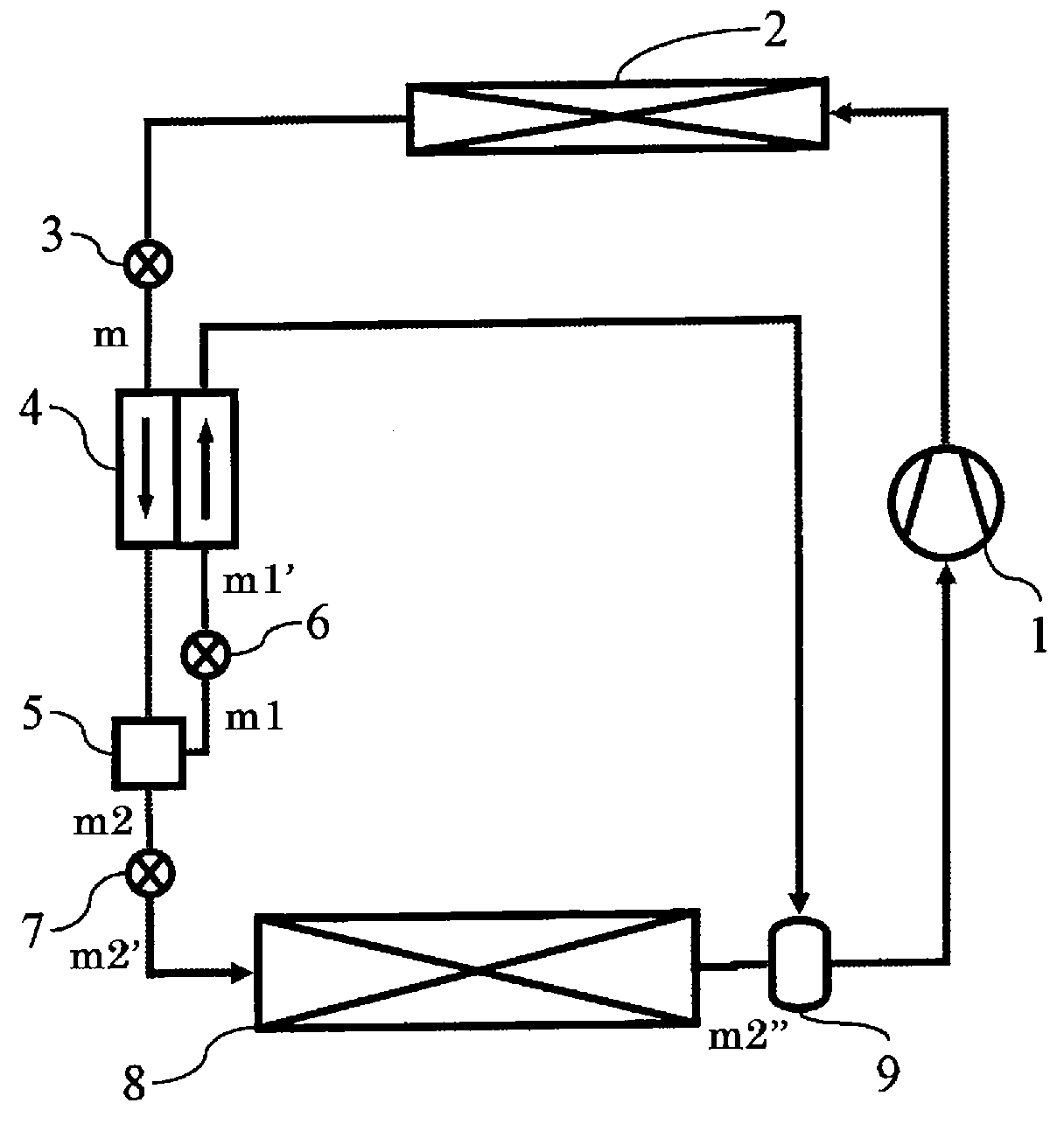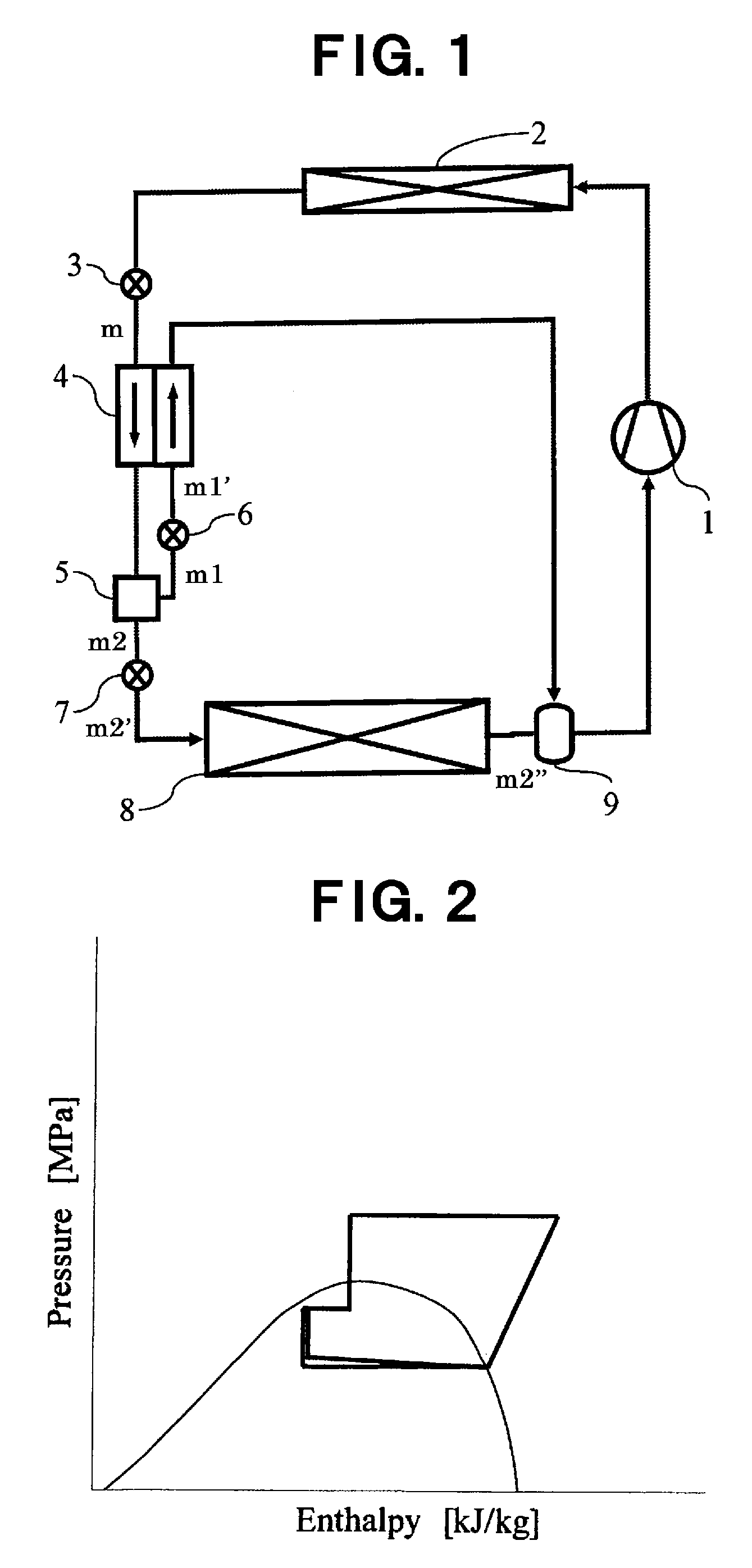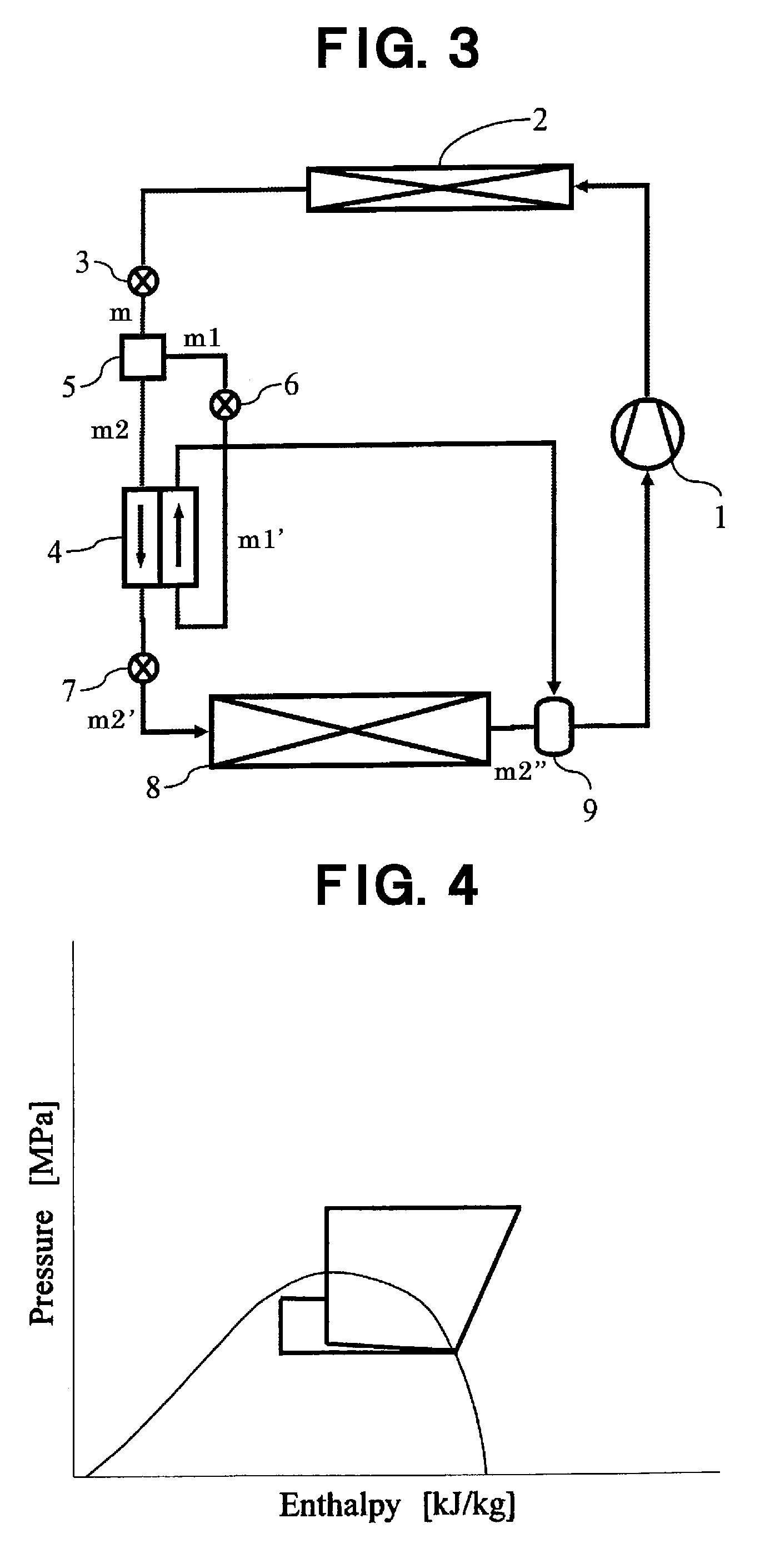Vapor compression refrigerating systems
a refrigerating system and vapor compression technology, applied in refrigeration components, mechanical equipment, light and heating equipment, etc., can solve the problems of increasing the thermal resistance of the compressor, the need to increase the power required for compressor operation, and the discharge temperature of the compressor may be elevated to an undesirable level, so as to reduce the degree of superheating and increase the coefficient of performance of the refrigerating system
- Summary
- Abstract
- Description
- Claims
- Application Information
AI Technical Summary
Benefits of technology
Problems solved by technology
Method used
Image
Examples
Embodiment Construction
[0032]FIG. 1 depicts a main structural part of a vapor compression refrigerating system according to an embodiment of the present invention, using carbon dioxide refrigerant which is natural-system refrigerant. In this refrigerating system, refrigerant compressed by a compressor 1 is introduced into a radiator 2, the refrigerant exchanges heat with an external fluid. The refrigerant passed through radiator 2 is reduced in pressure by a first pressure reducing mechanism 3 provided as a first pressure-reducing means at the exit side of radiator 2. The pressure reduced refrigerant (m) is divided into a plurality of portions by a refrigerant branching mechanism 5 provided as a refrigerant branching means. One portion of refrigerant (m1) is reduced in pressure by a second pressure reducing mechanism 6 provided as a second pressure-reducing means, the pressure reduced refrigerant (m1′) exchanges heat with the refrigerant (m) in a cooler 4, and the temperature of refrigerant (m) is reduced...
PUM
 Login to View More
Login to View More Abstract
Description
Claims
Application Information
 Login to View More
Login to View More - R&D
- Intellectual Property
- Life Sciences
- Materials
- Tech Scout
- Unparalleled Data Quality
- Higher Quality Content
- 60% Fewer Hallucinations
Browse by: Latest US Patents, China's latest patents, Technical Efficacy Thesaurus, Application Domain, Technology Topic, Popular Technical Reports.
© 2025 PatSnap. All rights reserved.Legal|Privacy policy|Modern Slavery Act Transparency Statement|Sitemap|About US| Contact US: help@patsnap.com



